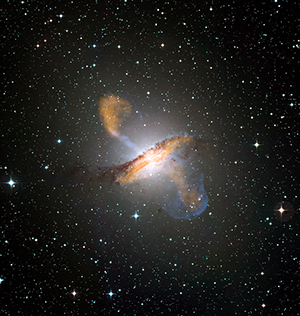
Cosmic rays — high-energy charged particles traveling at velocities that can approach the speed of light — are the only direct probe of chemical composition and nuclearsynthesis in the Universe. The majority of cosmic rays are atomic nuclei from hydrogen to the heaviest elements with energies spanning more than twelve orders of magnitude. Cosmic rays with energies below and just above the so-called "knee" in the middle of this energy range are most likely accelerated in supernova remnants. Their elemental and isotopic composition probes nucleosynthesis, nuclear interactions in the interstellar medium, the distribution of freshly synthesized elements, global Galactic properties, the mechanisms of supernova explosions, and particle acceleration in supernova shocks. At energies above roughly 1017 eV a different source dominates. The acceleration engines responsible for such extreme energies are not well understood, but at the highest energies, above 6 x 1019 eV, the rapid energy loss resulting from interactions with the cosmic microwave background limits sources to within about 100 Mpc. Other cosmic ray components include electrons, positrons, and antiprotons. Electrons are quite abundant and can be accelerated in many different types of sources, while positrons and antiprotons are largely the result of interactions of nuclear cosmic rays with the ISM but may also have other origins. Positrons as well as electrons can be produced directly in astrophysical objects such as pulsars and deviations in their spectra can provide important insights into nearby sources. Cosmic ray particles may also be produced directly in the annihilation of dark matter candidate particles such as, e.g., WIMPs, neutralinos, and Kaluza-Klein particles. Details of the spectra and composition of the resulting particles therefore provide important insights into the physics of particle accelerators and properties of the interstellar and/or intergalactic medium, and provide important constraints on the nature of the dark matter.